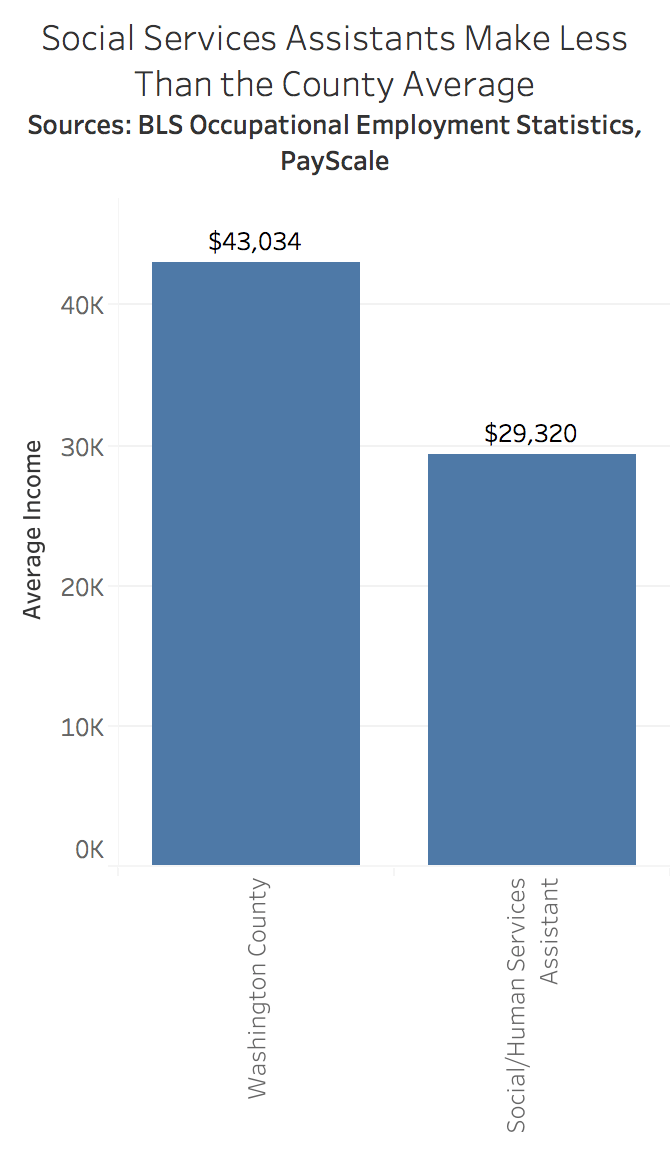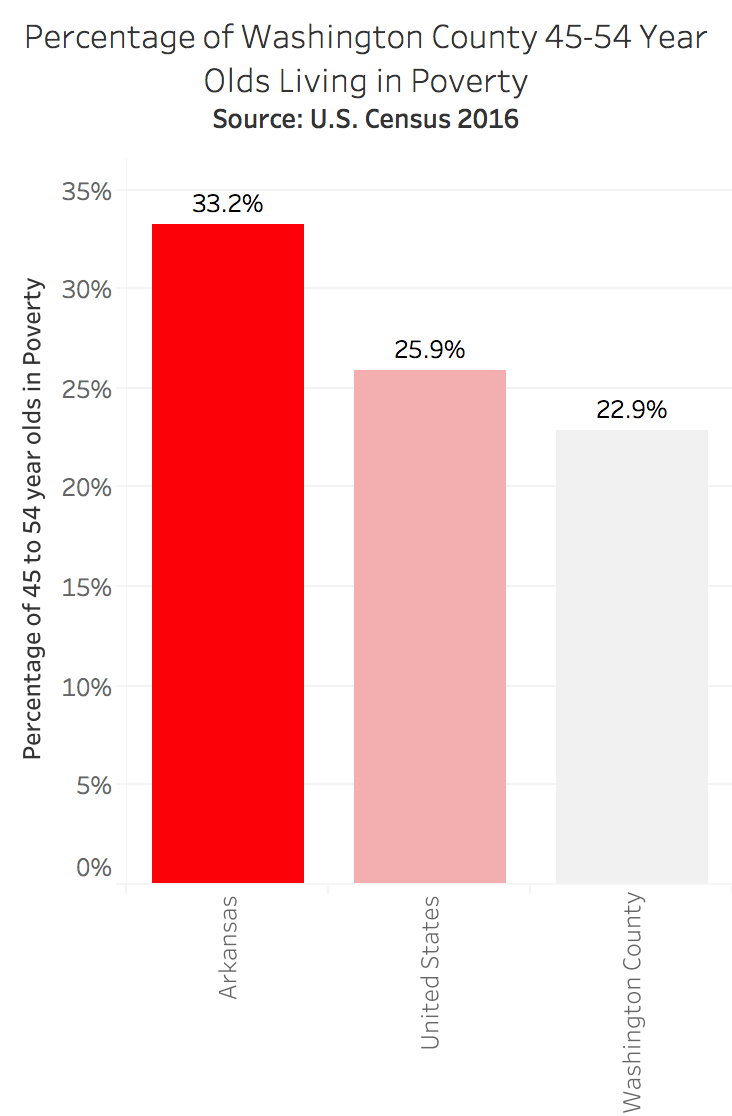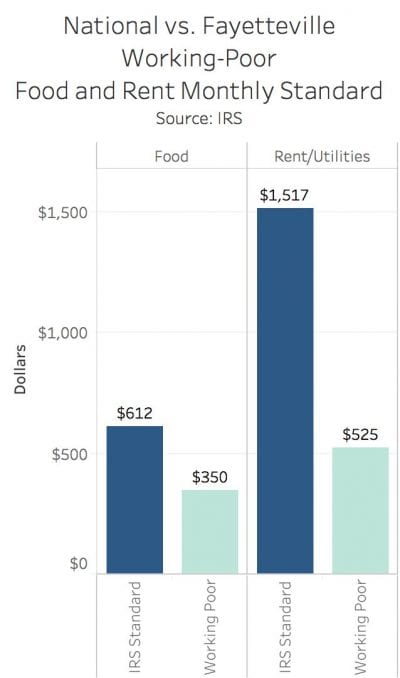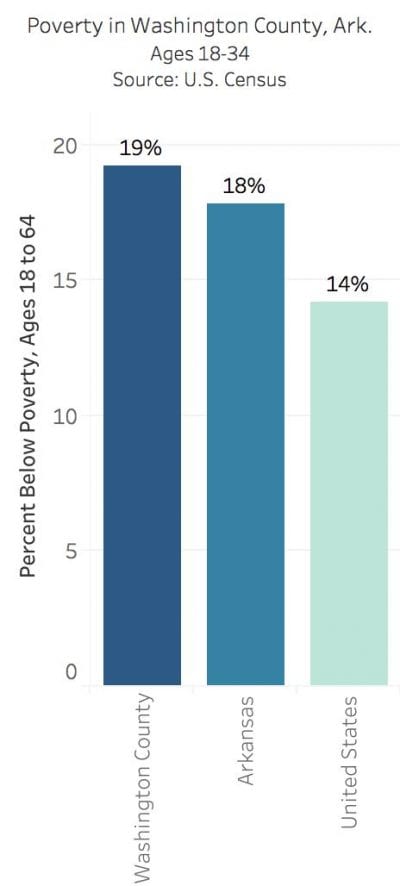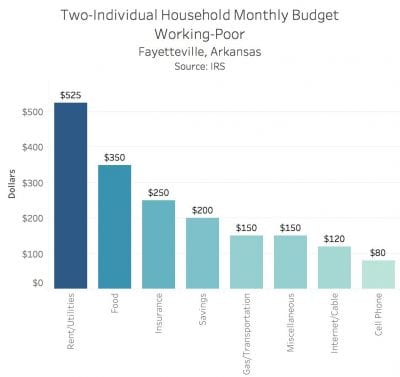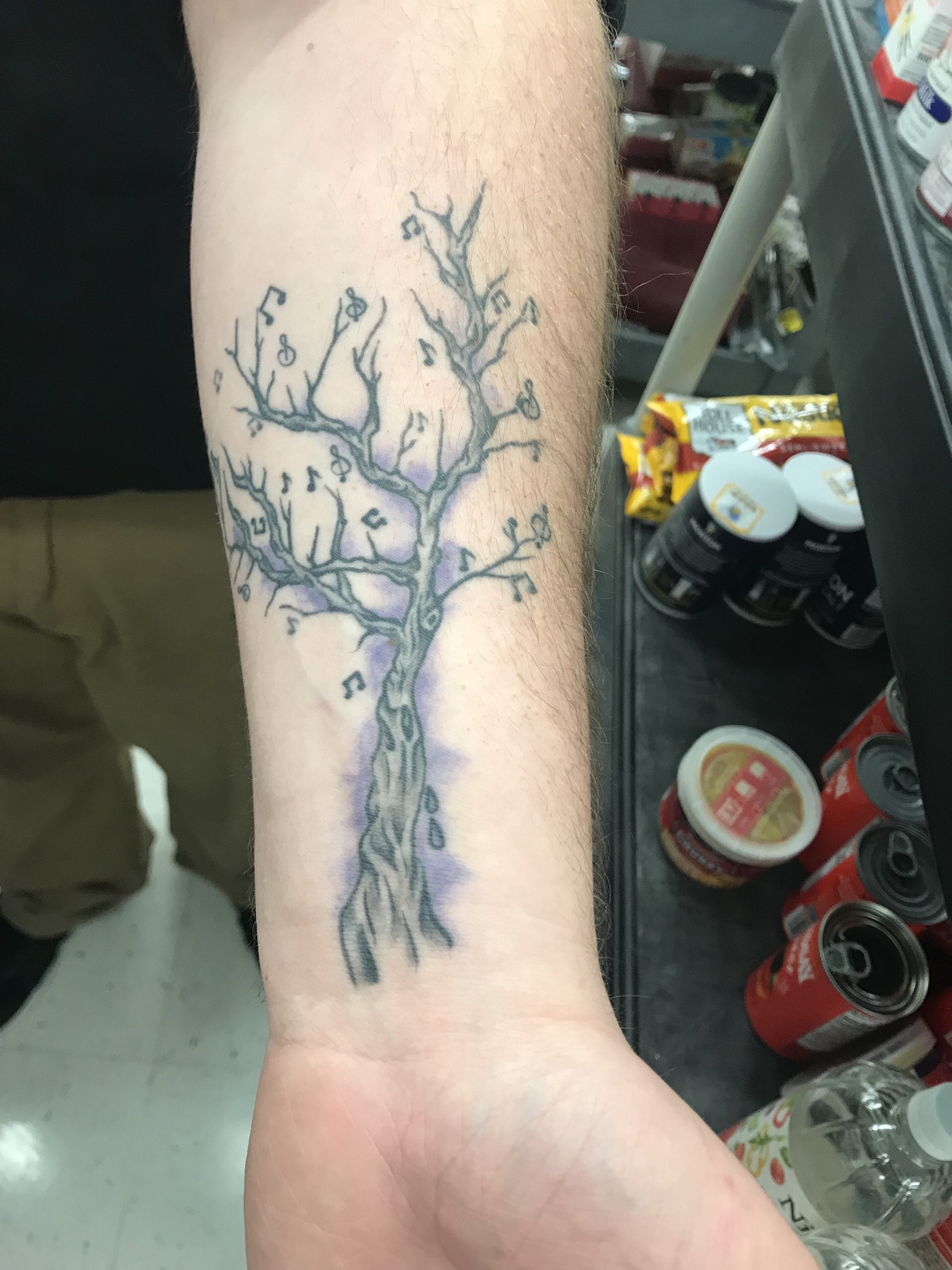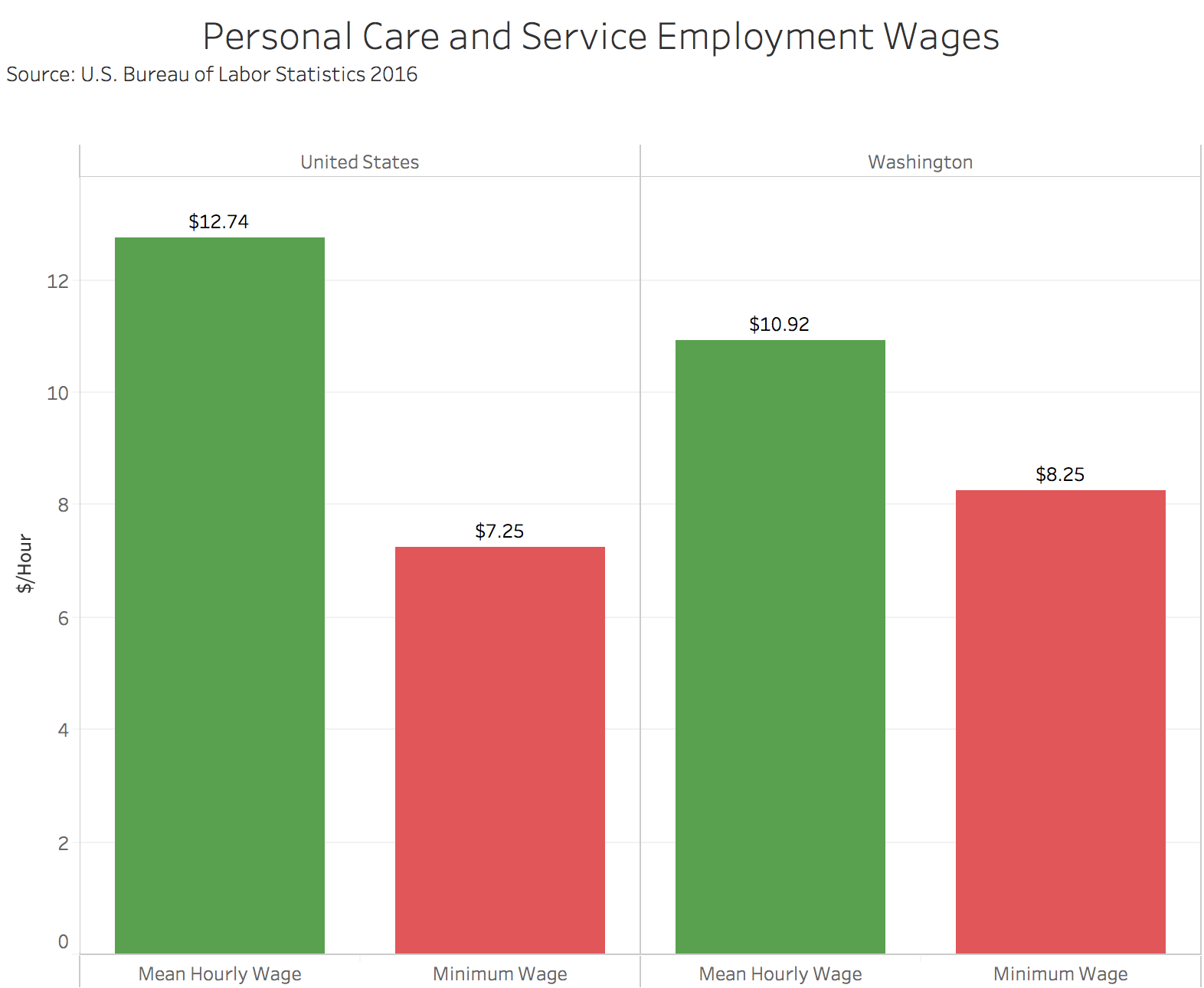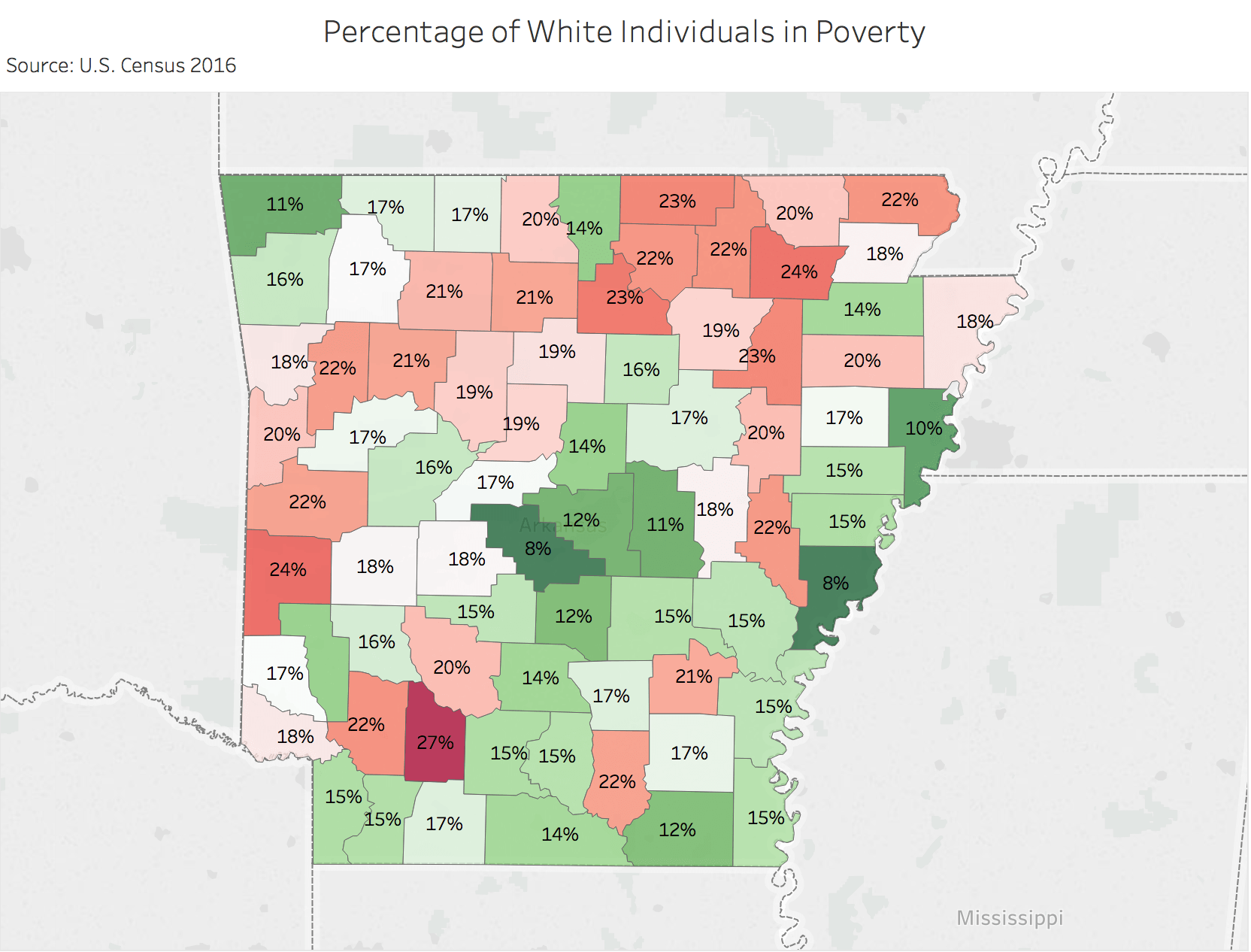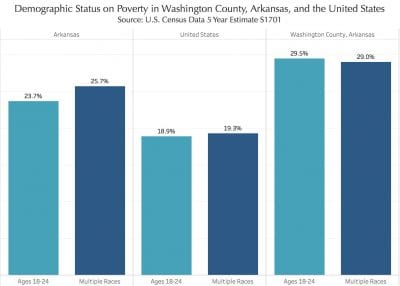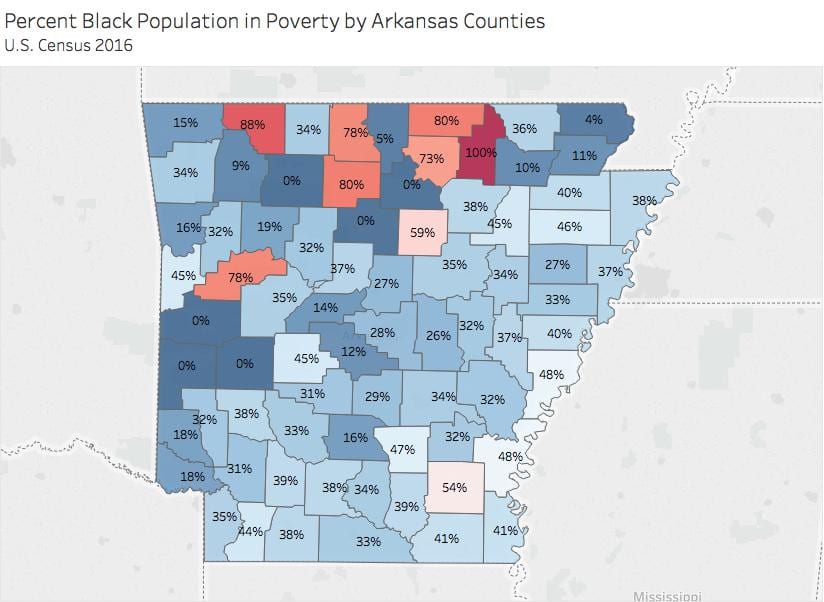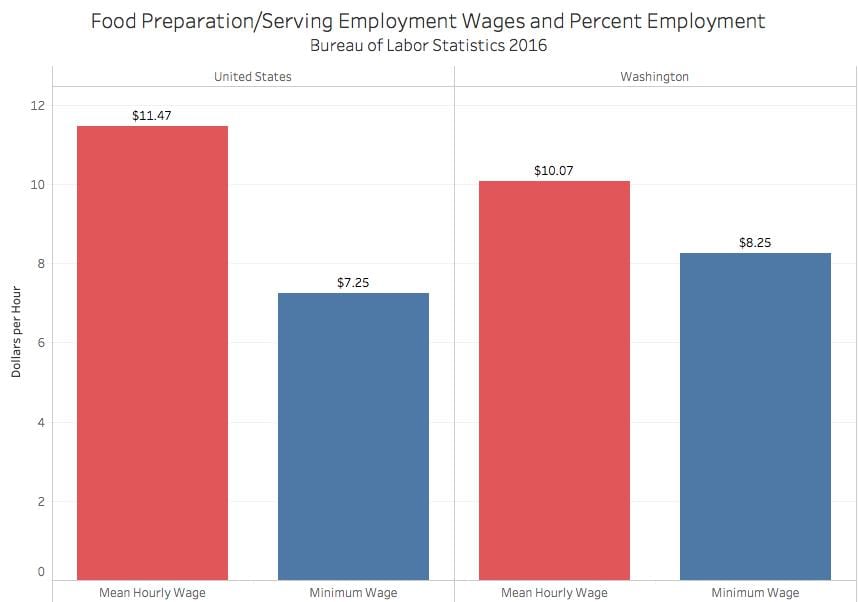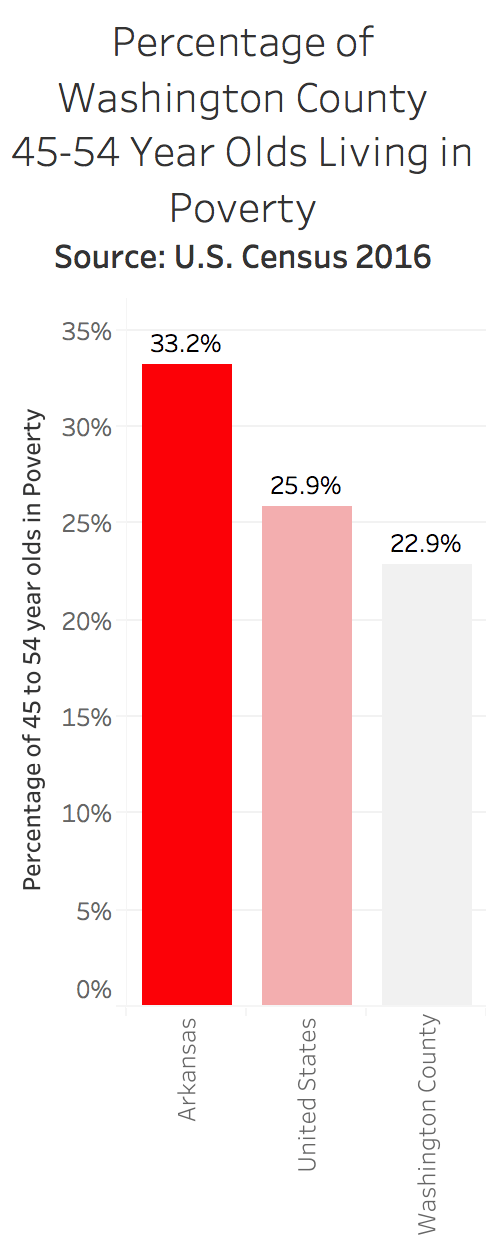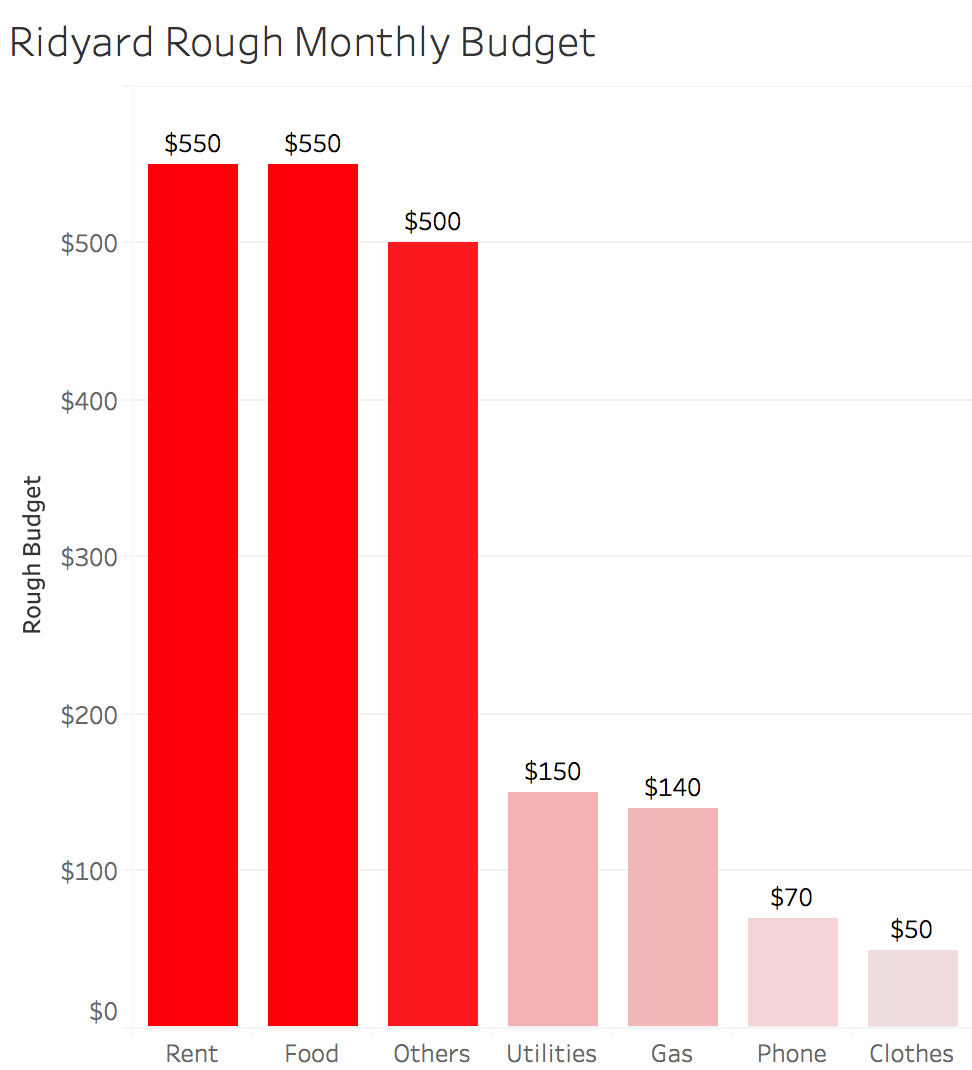Agenda for Monday, Oct. 8
–Context!
–Common Errors
Context #1
Add the Quick Facts for city population, demographics.
Little Rock: African American comprise 42 percent of Little Rock’s population. https://www.census.gov/quickfacts/fact/table/littlerockcityarkansas,US/PST045217
Add typical salary from Occupational Employment Statistics database for Arkansas
https://www.bls.gov/oes/current/oes_ar.htm
Common Errors – Math
Percent vs Percentage Point
At Lyon College, 67 percent of non-first-generation students paid back their loans within five years, while only 53 percent of first-generation students did the same, which results in a 14 percent POINT difference. The median debt for both types of students was the same though, at $12,000.
You mean “percentage point.” 14 percent of 67 is 9.4.
Steve Doig – MathCrib-Doig
Common Errors – AP Style on Numbers
AP Style on Numerals:
Numerals – AP Stylebook-2avrxtn
Common Error – Divi Library
Divi Builder. Do Not Save to Library.
Context #2: Build Charts for Context
First row: The overall median debt for Arkansas students; for men, for women.
Second row: The overall median debt for first generation students. And non-first generation
Third row: The overall statewide repayment rate, and the rate for men, for women
Fourth row: The overall median debt for white, black, asian, hispanic
Post on WordPress with the category Context
Research – Data Question
The Financial Aid department does not report loan repayment info to the Department of Education. “Once the students leave us we don’t track their information anymore,” he said.
Question: Look at data dictionary for source of this information. All 1,826 columns explained here.
https://collegescorecard.ed.gov/assets/FullDataDocumentation.pdf
https://collegescorecard.ed.gov/assets/CollegeScorecardDataDictionary.xlsx
Homework
#1: Read this report and compare to your work on context. Prepare to discuss it Wednesday
https://ticas.org/sites/default/files/pub_files/classof2016.pdf
#2: By 11:59 p.m. Tuesday, fix the issues with your charts and stories from Assignment #2. Post on WordPress, use the Context category for a tag
Courtney Boyd, McDonalds. By Ann Johnson
FAYETTEVILLE, Ark. – Courtney Boyd, an 18-year-old manager of the McDonalds on Martin Luther King Boulevard, works eight to ten hour shifts in order to make her dream of finishing culinary school come true. “I love cooking and being around food. That is one reason why I work here,” Boyd said. While being in charge of keeping McDonalds running like a well-oiled machine, she is also consciously invested in the well being of her coworkers and customers. “We are a tight knit group, like a family,” she said.
Boyd makes $10 an hour. She has worked at McDonalds since she was 15-years-old, and then once turning 18 she was promoted to a managing position. “I am a manager that has split shifts. Sometimes I work overnight, sometimes during the day, sometimes in the morning. I get thrown in because I have open availability,” Boyd said. At the time of this interview she was working at 1:30 am.
Courtney Boyd said that when one begins work at McDonalds as a crew member they make an hourly wage of $8.50 and then can work their way up to a maximum of $9.00 an hour. When Boyd was promoted to a managing position she began making the minimum hourly wage for a manager which is $10. Managers and crew members are able to be promoted yearly.
Boyd is grateful for her parents supporting her dreams. They fund 90 percent of her tuition at North West Arkansas Community College for culinary school. Boyd contributes the funds for 10 percent of her tuition to help out. “I am getting free rent at their house,” Boyd said that this is allowing her to save up for her own house.
Boyd said that she has to much to sacrifice considering that she works often onto of going to school. She said that the biggest sacrifice she makes is not having friends because she is working fulltime and even sometimes overtime in addition to the two five-hour classes that she is taking for culinary school. “I also have to sacrifice time with my family,” Boyd said. Boyd will go to her 11 am culinary classes twice a week after her 5 p.m. to 2 a.m. shift at McDonalds.
Boyd said that sometimes working at McDonalds isn’t worth it, but then sometimes it is. “At the pay I get, no. But it’s McDonalds, so I definitely could go somewhere else. I choose not to because they are easy with my hours and if I needed a day off they can usually give me the day off then and there and I don’t get any consequences,” she said.
Boyd informs me that the people that live below the poverty line are the staff workers that work nighttime shifts. “I believe that people that live below the poverty line are the people that work the hardest. They really want to keep their job and succeed,” Boyd said. Boyd said that McDonald’s holds a manager class once a month in order to provide the learning opportunity for staff workers that want to move up to managing positions. This class is helpful because in addition to positive reinforcement to the hard workers, it provides tips to maintaining good hygiene and acting as a leader in a fast paced work place.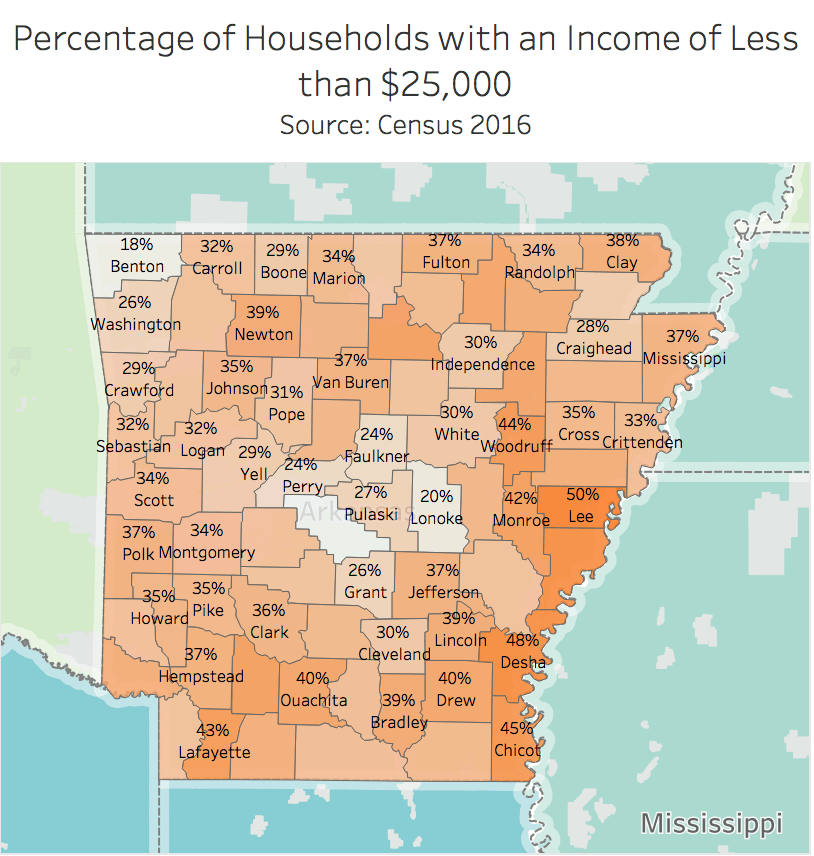
Courtney Boyd’s Contact Information for Verification:
courtney.boyd4092@gmail.com
479-287-5459
Dashboard 3/8 Katie Serrano
Jenny Ridyard, 7Hills Homeless Center. By Andrew Epperson

Photo: Andrew Epperson Fayetteville resident Jenny Ridyard manages client records for 7Hills Homeless Center.
—
Jenny Ridyard, 50, a client service specialist and data entry worker for 7Hills Homeless Center in Fayetteville, Arkansas, experienced an extreme form of poverty. In fact, she and her husband, Jim, were homeless for seven months before she landed her position with 7Hills.
At that time in her life, Ridyard’s income was zero. Jim Ridyard has Parkinson’s disease, and he lost his job as a forklift operator since he was no longer able to operate the controls. His medical bills increased as the Ridyards’ money decreased.
When they ran out of options, they began living out of a tent.
The 7Hills Homeless Center became an important resource for them, supplying needed medication and meals. The organization was founded in 2001 and aims to serve the growing homeless population in Washington and Benton Counties, which was 2,951 in 2017. The Fayetteville day center serves breakfast, offers clients the ability to take showers, receive and send mail, fill out job applications across the area and get in a position to accrue housing.
When Jim Ridyard’s disease continued to accelerate because of his poor living conditions, his disability application was fast-tracked. The application process can sometimes take over a year, as the government’s social security agency takes time to check and review all applications. During the Ridyards’ waiting period, they ate at churches and continued to frequent 7Hills and the Salvation Army.
Around the same time Jim Ridyard began receiving his disability checks, an intriguing opportunity opened up for Jenny Ridyard. Because of her familiarity with the homeless community and her good standing within the 7Hills community, she was asked to apply for an open job in the client service and data within the center.
With the sudden influx in income and a new penchant for saving, the Ridyards moved into an apartment, and now Jim Ridyard is retired while Jenny Ridyard, Chicago native, continues to work at 7Hills. Still, statistics indicate that Ridyard’s income doesn’t meet the Washington County average.
The median household income for Washington County residents is $43,034, according to data posted on PayScale’s website. Ridyard declined to disclose her salary, yet her job generally fits into the category of “Social and Human Services Assistant” on the Bureau of Labor Statistics Occupational Employment Database, which makes $29,320, according to the database’s statistics. Though she doesn’t live in poverty anymore, Ridyard still wonders why people fail to understand the true amount of impoverished individuals in Northwest Arkansas, she said.
Despite the notion that people in Washington County are typically better off than other parts of the state, statistics indicate that workers in Ridyard’s age bracket living in poverty are only a few percentage points fewer than the national average.
After finally moving into an apartment, the Ridyards opened a savings account and began buying their necessities at thrift stores and secondhand shops. Their monthly budget allows them to save money, which they intend to continue doing as they prepare to buy a house within the next year.
The Ridyards live in a one-bedroom apartment, but they understand they’ll likely need to pay more per month for a house. Fayetteville’s average monthly gross residential rent is $749, according to the Census ACS Survey conducted in 2015. The emphasis put on saving has put them in a position to afford that extra rent, Ridyard said.
While Ridyard isn’t living in poverty anymore, she hopes Washington County will put a bigger emphasis on helping those who are, she said.
Lisa Terry, Waffle House. By Katie Serrano
As Lisa Terry serves hot coffee, eggs and sausage to customers at a nearly empty Waffle House in Fayetteville, she knows the tips she recieves from those orders will go towards rent, food and feeding her cats.

Lisa Terry, 23, stands with her order pad at the Waffle House on Martin Luther King Boulevard.
For Terry, 23, and her husband, their annual income is below the poverty line in Arkansas, and their household rent is $200 less than the median for Fayetteville, and they live pay-check-to-pay-check.
“I make minimum wage working at Waffle House, and my husband works in Facility Management at the University,” Terry said. “We consider ourselves working poor. Thankfully my husband gets paid monthly, and we use that paycheck on bills, food and gas.”
Terry and her husband eat “cheap food like spaghetti, and ramen,” and she said that she is lucky because Waffle House allows her to eat one free meal for every four hours she works. Waiters and waitresses in Washington county and the Northwest Arkansas area such as Terry make roughly 20 percent less annually than the national average wage.
“The minimum wage for waitering in Arkansas is $2.63, and Waffle House tries to compensate if your tips don’t make up the difference to $8.50, but it’s not nearly enough to get by,” Terry said. “If I’m able to work around 35 hours a week, I’m lucky.”
She has tried to get other jobs, but always ends up back at Waffle House, where she has been working since May of 2016.
“I had to drop out of school because of a medical issue,” Terry said. “Whenever I go apply for other jobs nobody wants to hire someone who wants to work as many hours as me. They want to hire high school or college students who only want to work twenty or so hours a week so they don’t have to pay them benefits.”
Nineteen percent of individuals between the age of 18 and 34, a category that encompass Terry and her husband, are considered below the poverty line in Washington County, which is 5 percent higher than the national average for that age group.
For a family of two living in Fayetteville, Arkansas making less than $24,000 a year, their monthly budget is nearly half of what the Internal Revenue Services considers to be the proper standard of living
The standard housing budget for a couple in Fayetteville, around $500, is 97 percent lower than the standard set by the IRS, while the monthly food budget is 54 percent lower than it should be.
Although these occupations pay barely enough to get by, 2.5 million individuals fill the positions nationwide, and a little over 4,000 individuals are employed in these positions in Northwest Arkansas alone, according the U.S. Census Bureau.
Class 8: March 8, 2018
Tableau Dashboards
Dashboards with Poverty Data
Assignment:
Fix Your Assignment #2, post on WordPress by 11:59 pm Wednesday, March 7
Build a Tableau Dashboard with the following elements:
- A map of poverty rates statewide with a filter to allow readers to interact with the data
- A chart comparing workers by county with total incomes below $25,000 to the county median income. Filter this to the six Northwest Arkansas counties: Benton,Carroll, Crawford, Madison, Sebastian, Washington,
- A chart of single mother households in poverty, Filter this to the six Northwest Arkansas counties: Benton,Carroll, Crawford, Madison, Sebastian, Washington
Format and size so everything is legible. This takes time!
Post your dashboard on Tableau Public. You will need to create a separate Tableau Public account.
Capture the embed code and post it on WordPress. Also post the url of the Tableau Public page.
This is due 11:59 pm Friday, March 9 on WordPress
Graded Assign#2 Winters
FAYETTEVILLE, Ark. – Walgreens’ Designated Hitter,***put in quotes or lowercase*** Thomas Mandrell, 23, works full-time stacking toilet paper, peanut butter, and filling in wherever needed around the store. He makes $12.85 an hour, which is a monumental step up from the $7.75 he made working at Popeye’s.***really a nice lede. nice details***
Mandrell said it was a tough battle trying to get by on that slim of a budget while working as a server at Popeye’s. Most of his money goes towards rent, car coverage, and savings. Walgreens offers its employees a well-rounded insurance policy and “after each evaluation, employees are offered a 20 percent raise, which is what is really cool about working here.”***attribution?***
The difference between Designated Hitters and regular Walgreens employees is that they are allowed to go back into the pharmacy and fill prescriptions.
Mandrell moved to Fayetteville when he was 13 years old with his family while the rest of his family remains in Arlington, Texas. He said, “the white side of his family is still here and the Hispanic side is in Texas.” ***love this*** He is saving up money to move back to be a Spanish translator for his family so that they will be able to have more work opportunity and to have better connection with family members.
***really strong photo. you have him in the workplace ***
One of the struggles he mentioned with his family being separated by states is the language barrier. **awkward – revise*** Mandrell said not being able to keep up with the language, and having a disconnect because of it is an issue, which is why he strives to be a translator for them.***revise***
“Working at Walgreens is a really good job. It is very stable and something I can always depend on,” Mandrell said. His prior experience working at Popeye’s gave him a wide skill set that Mandrell said he believes helped him get his current job, and allowed him to move up in the company quickly. ***great stuff***
When asked about the stress difference between working at Popeye’s and working at Walgreens, Mandrell said no matter what position you hold that it is incredibly stressful. He got his current job through a family connection, which he expressed an immense amount of gratitude because it got him out of his prior job.
Mandrell is very musically motivated, and enjoys playing the guitar in his free time. He said he likes to spend his extra cash on meaningful tattoos, and “hopes to have full sleeves on both arms one day.”
The tattoo on his left forearm is his “tree of life.” It symbolizes all of the things that motivate him and express his personality and values. This is why there are musical notes hanging from the leaves. ***this is terrific personal detail and a wonderful photo***
Even though he described the benefits of Walgreens as great, he does not want to do this forever. He is interested in getting involved in working with the law in his future back in Texas.
***Look more deeply into the OES data and you will find cashiers and other occupations that are more specific than the general umbrella category of “personal care and service employment”
Format Y axis with a $ sign.. Specify Washington County, Arkansas***
This chart displays that minimum wage is less than what the hourly wage is, meaning people making more the minimum amount can still be classified as working poor.
**what about county labels? who do the colors represent?***
Butler Assignment#2 Graded
the photo is a little small. remember to store your images in the largest format possible before uploading Approximately 1 in 3 residents of Fayetteville, Arkansas fall below the poverty line. Alejandro Z. and Abigail J. ***if these people don’t want their last names published, you have to spell that out for readers why that is the case. You will have to share with me their last names and I will have to contact them to double check this unusual arrangement *** were one of the many residents in this statistic.
Approximately 1 in 3 residents of Fayetteville, Arkansas fall below the poverty line. Alejandro Z. and Abigail J. ***if these people don’t want their last names published, you have to spell that out for readers why that is the case. You will have to share with me their last names and I will have to contact them to double check this unusual arrangement *** were one of the many residents in this statistic.
Abigail ***age, hometown*** waited tables at Grubs Uptown for most of college ***specify she attended University of Arkansas and describe her major***. It was easy to balance school and work, and she had to support herself after her parents stopped giving her the little they did. In 2015, Abigail met Alejandro, and they married in December of 2016. In the summer of 2017, Alejandro, an immigrant from Bolivia, lost his Education Visa, **not capitalized*** forcing him to lose his job.
For close to 6 **six** months, the married couple lived off of a servers salary alone. Being a server is inconsistent at best – especially at this location. Some nights, Abigail would leave with $350 in cash, and some nights she would leave with $19. ***great detail. This is an interesting story all around***
“I had to balance giving up things I love,” Abigail said.***good quote***
Beyond the financial instability that comes with being a server, there was emotional instability as well.
The majority of Abigail’s friends achieved five-figure jobs days after graduation, leaving her emotionally behind and feeling unaccomplished. Abigail did not get a job until almost a year and a half after graduation, much later, but much more realistic, than most recent graduates. ***I don’t understand this section***
For most college students and recent graduates, a job like serving is very common. The hourly wage for servers in Arkansas is lower than that in the United States as a whole. When this is the primary salary, that person immediately falls below the standard of living.
Good basic chart. I would add the wages for the Fayetteville region to this chart, too See: https://www.bls.gov/oes/current/oes_22220.htm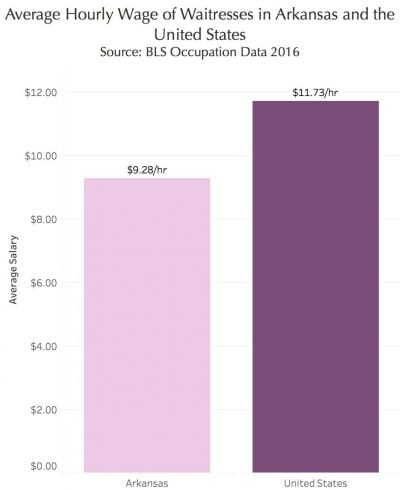 Luckily for Abigail, Alejandro had a job that brought in nearly $50,000 each year. But when his immigration paperwork failed to go through and he lost his education visa, Alejandro lost his job. ***repeats a little from the beginning. add some more details so it doesn’t sound the same***Abigail speaks on the immediate shock of the loss, and what they had done to prepare.
Luckily for Abigail, Alejandro had a job that brought in nearly $50,000 each year. But when his immigration paperwork failed to go through and he lost his education visa, Alejandro lost his job. ***repeats a little from the beginning. add some more details so it doesn’t sound the same***Abigail speaks on the immediate shock of the loss, and what they had done to prepare.
***This is a bonus. I didn’t require the undergrad version to produce audio, but glad to have it. I would edit this a bit and get your question out of the clip. Do a voice over introduction that more clearly sets up the context. Good job here though***
When the couple married in 2016, they knew that the deadline was coming soon to extend the work visa. They blame their predicament on how late the documents were submitted. They spent what money they had left to pay for an immigration lawyer and print documents. They spent hours making sure everything was accurate, and “printed, labeled, and put together”, Abigail said.
Seven months passed before any kind of court date, until late October ***2017???**. Alejandro gained his green card back, and went back to work almost immediately.
Abigail and Alejandro are not alone in their poverty status. In Washington County, AR, nearly 30% ***see AP style on these items*** of residents aged 18-34 remained under the poverty level. For multi-ethnicity households, that percentage is 29%. Abigail and Alejandro met both of these criteria.
***We can discuss whether Abigail should be classified as multiple race. She’s white, right? Alejandro would be Latino. So I would do those categories.***
During their time below the poverty line, Abigail and Alejandro were among the statistic of multiple ethnicity households that were in poverty. The struggles of being newlyweds and living under the poverty line bring on a set of struggles.
Not only are the struggles financial, but they are also emotional. Their relationship took a toll because of the many stressors that come with being unemployed and poor.
“That was the least close we had been,” Abigail said.
The security of having a job, a steady income, and financial stability are not only meaningful for young couples, but also necessary.
Tucker Assignment #2 Graded
***strong photo***
Karen Roquemore, 48, works two jobs to keep up with her lifestyle. Her full-time job entails pushing paperwork, and answering calls mostly for commercial insurance clients. She’s been with this company for 18 years and makes $15 an hour. Roquemore said she had to pick up a second job, because her work with the General Agency ***double check that is the name– what kind of business is this?*** no longer was able to offer overtime for her or any of her coworkers. Her full-time job takes absolutely no more than 40 hours a week, and she said she supplements with a cashier position at Harps Grocery Store. Her position as a cashier pays $10 per hour. Roquemore is wearing her black Harps uniform and she has a big, inviting smile on her face.***nice detail*** She said she is happy to work at Harps even part-time, because it doesn’t take too much energy and they don’t ask for too much out of her. “I make enough to make it worth my while,” she said. **good quote** The flexibility is what she said she likes most about her cashier job at Harps.
Roquemore is married, but her she and her husband have no children. She expressed said that it would be even more difficult to maintain a comfortable lifestyle if she had kids to worry about on top of herself and her husband. ***revise- wordy*** She said there’s probably no way she could work 2 ***numbers – AP style*** jobs like she does if she added children to the mix. She said she has some spending habits and that she has a weakness for purses.**funny** Roquemore is very independent, she says her husband is able to give her what she needs, but things that she wants are up to her.
Roquemore said her job with the General Agency is more stressful than her job as a cashier at Harps. Her position with the agency doesn’t offer a 401-K, but another type of “stock-like” retirement that fluctuates with the performance of the department. She called the plan “VANGARD,” ***proper name is The Vanguard Group – it’s a mutual fund provider *** ,and said it is similar, but her retirement does not compound.
Roquemore said her husband **get his name** gets tired of her working two jobs and that it can be a stress on their relationship. However she says it’s worth it to give more of her time to a job in order to have more flexibility in her budget. “A girl’s gotta do what a girl’s gotta do…I’m physically capable of working 2 jobs, so I’m okay,” ***she said.** Roquemore said when she recalled her husband worrying of her working too hard.
“When I go home, it’s just me and my dog,” **she said.** Roquemore said her and her husband are often on different schedules, and that even maintaining an animal is sometimes a challenge.
The following charts expand on the information about Roquemore’s demographic as a Black woman. The Arkansas map is broken down by county, illustrating the most at–risk black communities to be in poverty. Sharp county has a 100% poverty rate in the black community, but the total number ***of blacks in poverty*** is only 11. The deeper the red the more likely the black population in that county is to be in poverty. The deeper the blue the more likely the black communities are to be at risk of poverty. ***Let the chart and labeling tell that story.***
***move sentence below the first chart – better transition *** Furthermore I wanted to compare the state and federal minimum wages being lower than the mean hourly wages for the category of occupation–food preparation and serving.
**chart below — how would you label the counties? what do the colors represent?***
***insert text here too break up these graphics***
***below, specify Washington County, Arkansas
*** use cashiers instead of food preparation/ serving, which is an umbrella category. cashiers make $9.49 an hour.
| 1-2011 | Cashiers | detail | 5,710 | 6.8% | 24.503 | 0.97 | $9.08 | $9.49 | $19,750 | 1.1% |
Graded – Serrano#2
LEAD WITH LISA TERRY’S STORY
For a family of two living in Fayetteville, Arkansas making less than $24,000 a year, their monthly budget is nearly half of what the Internal Revenue Services considers to be the proper standard of living.
**TWO-INDIVIDUAL GRAPHIC: SOURCING NEEDED. I’M UNSURE ABOUT RELATIONSHIP OF THESE TWO GRAPHICS. THE TWO INDIVIDUAL ADDS UP TO $1,717 AND THE WORKING POOR ADDS TO $875. ARE WE TALKING ABOUT THE SAME THING?**
For Lisa Terry, 23, ***tells us she works at Waffle House *** and her husband, ***their household rent is $200 less than the median for Fayetteville*** WHY NOT DESCRIBE HER WAGE INSTEAD OF THE RENT???, and they live pay-check-to-pay-check.
“I make minimum wage working at Waffle House, and my husband works in Facility Management at the University,” Terry said. “We consider ourselves working poor. Thankfully my husband gets paid monthly, and we use that paycheck on bills, food and gas.” ***Great quote***
Terry and her husband eat “cheap food like spaghetti, and ramen,” and she said that she is lucky because Waffle House allows her to eat one free meal for every four hours she works.***Great detail***
***GOOD GRAPHIC***
Waiters and waitresses in Washington county and the Northwest Arkansas area *** such as Terry *** make roughly 20 percent less annually than the national average wage.
“The minimum wage for waitering in Arkansas is $2.63, and Waffle House tries to compensate if your tips don’t make up the difference to $8.50, but it’s not nearly enough to get by,” Terry said. “If I’m able to work around 35 hours a week, I’m lucky.”
She has tried to get other jobs, but always ends up back at Waffle House, where she has been working since May of 2016.
“I had to drop out of school because of a medical issue,” Terry said. “Whenever I go apply for other jobs nobody wants to hire someone who wants to work as many hours as me. They want to hire high school or college students who only want to work twenty or so hours a week so they don’t have to pay them benefits.” ***again, these quotes are compelling and right on point***
HAVE “poverty in Washington County, Ark.” on one line

Nineteen percent of individuals between the age of 18 and 34, ***a category which would encompass Terry***, are considered below the poverty line in Washington County, which is 5 percent higher than the national average for that age group.
MOVE THIS PHOTO TO THE TOP OF THE STORY

***need to format captions properly**** Lisa Terry, 23 from Fayetteville, Arkansas
THIS LINK BELOW DOES NOT PLAY THE AUDIO
The standard housing budget for a couple in Fayetteville ****how much is it? **** is 97 percent lower than the standard set by the IRS, while the monthly food budget is 54 percent lower than it should be.
Although these occupations pay barely enough to get by, 2.5 million individuals fill the positions nationwide, and a little over 4,000 individuals are employed in these positions in Northwest Arkansas alone.***attribution***
Graded Epperson Assign#2
**Solid Photo. Needs a caption formatted properly. Photo credit too**
Jenny Ridyard, a client service specialist and data entry worker for 7Hills Homeless Center in Fayetteville, Arkansas, experienced an extreme form of poverty. In fact, she and her husband were homeless for seven months before she landed her position with 7Hills.
According to statistics collected in the U.S. Census, there is a fewer percentage (SUBJECT VERB AGREEMENT) of people Ridyard’s age impoverished in Washington County compared to the state and the country. (INTERESTING STATISTIC. NOT SURE THIS IS THE LEAD STAT WE WOUD USE TO TELL THIS STORY, HOWEVER. WE WANT TO KNOW RIDYARD’S STORY FIRST AND THEN GET INTO THIS STATISTIC, WHICH CONFLICTS WITH HER NARRATIVE. THAT’S FINE BUT FIRST WE NEED A BASELINE OF HER STORY.)
***Expand the horizontal axis, reduce font size a bit ***
Though it’s easy to get caught up in the statistics, there is still a large number of people in the county who live in poverty, Ridyard said.
***A short VO to introduce this clip would be good. I would also use this quote in the story***
****transition missing***At that time in her life, Ridyard’s income was ***AP style – just say zero*** $0. Her husband **name** has Parkinson’s disease, and he lost his job as a forklift operator when his ailment increased to a point where he could no longer operate the controls. ***since he was no longer able to operate the controls.*** The Ridyards applied for disability, but they had to wait a significant amount of time for that money to start rolling in. ***how did they go from applying for disability to living in a tent? several steps missing here. fill them in.*** They began living out of a tent, and 7Hills became an important resource for them, as they supplied needed medication and meals. **Explain a bit about 7Hills. a few sentences about what it is and how many peoopel it serves, and the services***
When Ridyard’s husband’s disease continued to accelerate because of his poor living conditions, he was fast tracked to a seven-month wait ***wait for what? unclear***, she said. During that time, the Ridyards ate at churches and continued to frequent 7Hills and the Salvation Army.
Around the same time Ridyard’s husband began receiving his disability checks, an intriguing opportunity opened up for her. Because of her familiarity with the homeless community and her good standing within the 7Hills community, she was asked to apply for an open job in the client service and data realm within the center.
Ridyard was hired, but when she looks back on it, a part of her never thought she’d make it out of the woods, she said.
***Interesting. Again, a brief VO introduction***
***We discussed this. You should find a position that is a better fit rather than speculating here. **** According to statistics from the BLS Occupational Employment Database, jobs listed under “Community and Social Service” make an average of $44,370 a year. Careers and jobs involving homeless outreach are at the low end of the totem pole, so one could speculate ***we never speculate in news stories*** Ridyard makes significantly less than that. If taken at face value, that type of job makes more than the average Washington County resident.
***A few issues with the data on this chart.
- You cited the OVERALL wage for community and social workers. But there are most specific occupations that would be a better fit and which pay less. Ridyard might be more accurately classified as a Social and Human Services Assistant which makes about $29,320
https://www.bls.gov/oes/current/oes211093.htm
https://www.bls.gov/oes/current/oes211093.htm#st
where did you get the $39,447 wage figure for Fayetteville?
If Ridyard’s supposed ***again, you don’t do this in news stories*** $44,370 salary was divided up, she’d make around $3,697.50 per month. If that were the case, she’d be making much more than what her rough monthly budget could be.
***caption missing: needs clear sourcing***
According to the Census ACS Survey conducted in 2015, Fayetteville’s average monthly gross residential rent is $749. She lives in a one-bedroom apartment, but she’s hoping to move into a house within the next year, she said.
***This is a better clip – easier to follow than the second clip. VO needed****
By opening up a savings account and actively saving with the intent to buy a small house, Ridyard hopes she can learn from her time in extreme poverty but never live in it again, she said.


